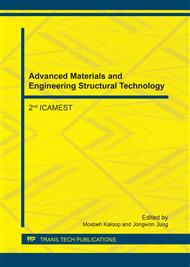p.142
p.147
p.157
p.162
p.167
p.173
p.179
p.184
p.192
Comparison and Analysis of Braking Load Capacity in Different Chinese City
Abstract:
In this paper we used the braking load index to illustrate the different braking load of cities under different braking conditions. The initial speed of braking, braking process speed difference, braking deceleration, temperature change of friction plate in braking process, the brake pedal force are different. Through the analysis of the measurement data, we comprehensively understood the differences of the braking conditions in different cities and the driving habits of consumers in different regions. The research could give a good theoretical support for the design process and after sales service.
Info:
Periodical:
Pages:
167-172
Citation:
Online since:
April 2017
Authors:
Keywords:
Price:
Сopyright:
© 2017 Trans Tech Publications Ltd. All Rights Reserved
Share:
Citation:


